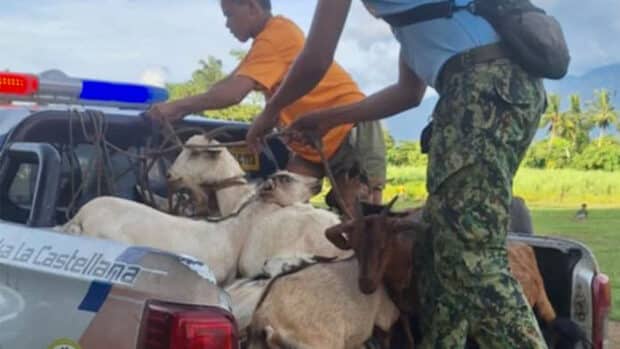OCD issues warning of lahar risk from Mt. Kanlaon

BACOLOD CITY, NEGROS OCCIDENTAL, Philippines — The Office of Civil Defense (OCD) on Sunday warned of a potential lahar hazard flow from Mt. Kanlaon that could endanger 644,487 residents across 13 cities and municipalities on Negros Island.
The 13 areas are Bago City, La Carlota City, Pontevedra, Pulupandan, San Enrique, Valladolid, Binalbagan, Himamaylan City, Hinigaran, Isabela, La Castellana and Moises Padilla in Negros Occidental, and Canlaon City in Negros Oriental.
READ: Kanlaon dumps ash on 6,797 hectares of sugar land
Dr. Razel Nikka Hao, regional director of the Department of Health Negros Island Region (DOH-NIR), in a separate advisory Sunday, also said their team monitored that lahar flow has started in some parts of Negros Occidental, particularly in areas where heavy ash has fallen following the eruption on Dec. 9.
Lahar is a rapidly flowing thick mixture of volcanic materials such as ash and rock fragments from an erupted volcano mixed with water. It can move at a speed up to 75 to 80 kilometers per hour on steep slopes and can be extremely destructive and can cause significant damage to property and loss of life, the DOH advisory said.
Article continues after this advertisement
Lahars may cause irritation in the eyes and airways, cause vomiting, dizziness, headaches, and rapid or difficulty breathing, Hao said.
Article continues after this advertisement
It can also cause nasal and throat irritation and dry coughing. Individuals with preexisting respiratory conditions such as asthma or bronchitis may experience a more severe symptom, she added.
Safety measures
She advised the public to: Avoid areas near rivers or any body of water going down stream; remain indoors and close windows and doors; wear protective masks and goggles; avoid driving in heavy and active ashfall; wear long sleeves and long pants if you must go outdoors; and if experiencing any of the symptoms mentioned earlier, immediately contact a physician or visit the nearest health center.
What appears to be lahar is being called mudflow flow by state volcanologists for now and is subject to validation, Raul Fernandez, OCD Region 6 director, said.
The OCD said with a low pressure area expected to bring heavy rains in Negros in the coming days, populations at risk were strongly advised to stay updated and monitor official weather updates and alerts from their local governments.
According to the OCD, there are about 3 million metric tons of ash deposits from the Dec. 9 Mt. Kanlaon eruption that could be washed down to nearby villages by rain.
This will be three times greater than the 1 million metric tons of ash deposits recorded during the previous eruption on June 3, it said.
Animal evacuation
Over the weekend, a mass evacuation of farm animals located within the 6-km expanded danger zone of La Castellana was implemented amid fears of another eruption and lahar flow.
Provincial Administrator Rayfrando Diaz II said that as of Sunday, 940 carabaos, cattle, goats and chickens were brought to an animal shelter in La Carlota City so that residents at the foot of the volcano would not keep returning to their farms to check on their livestock.
La Castellana Mayor Rhummyla Nicor Mangilimutan has appealed to livestock buyers to purchase farm animals at fair prices following reports that residents had to sell their farm animals at low prices because some buyers were taking advantage of the situation.
At least 26,006 farm animals, including pets, reportedly suffered from respiratory and digestive diseases as well as skin and eye irritation due to volcanic ash and sulfuric fumes, the provincial veterinarian reported.
The Dec. 9 eruption of Mt. Kanlaon also damaged P27,182,102 in high-value crops, rice crops and fisheries in La Castellana and La Carlota City, local authorities said.
As of 10 a.m. Sunday, the total number of evacuees in Negros Occidental and Negros Oriental stood at 14,807.
La Castellana has the most number of evacuees at 8,158, followed by La Carlota City (2,465), and Bago City (382). Canlaon City has 3,772 evacuees.
President Marcos on Friday assured the government would step up its response to help those affected by the calamity. The target is to evacuate 84,000 residents living within the 6-km radius from the main crater and the eruptive center.